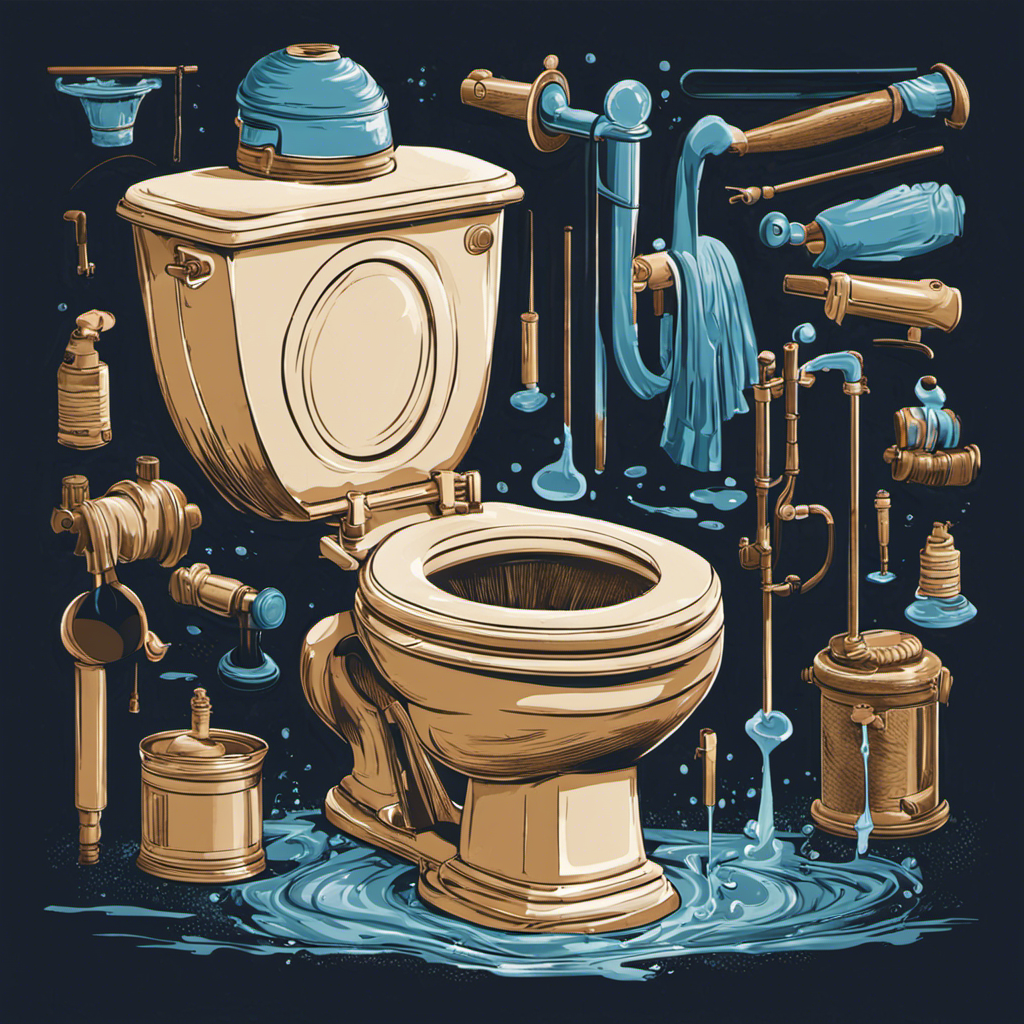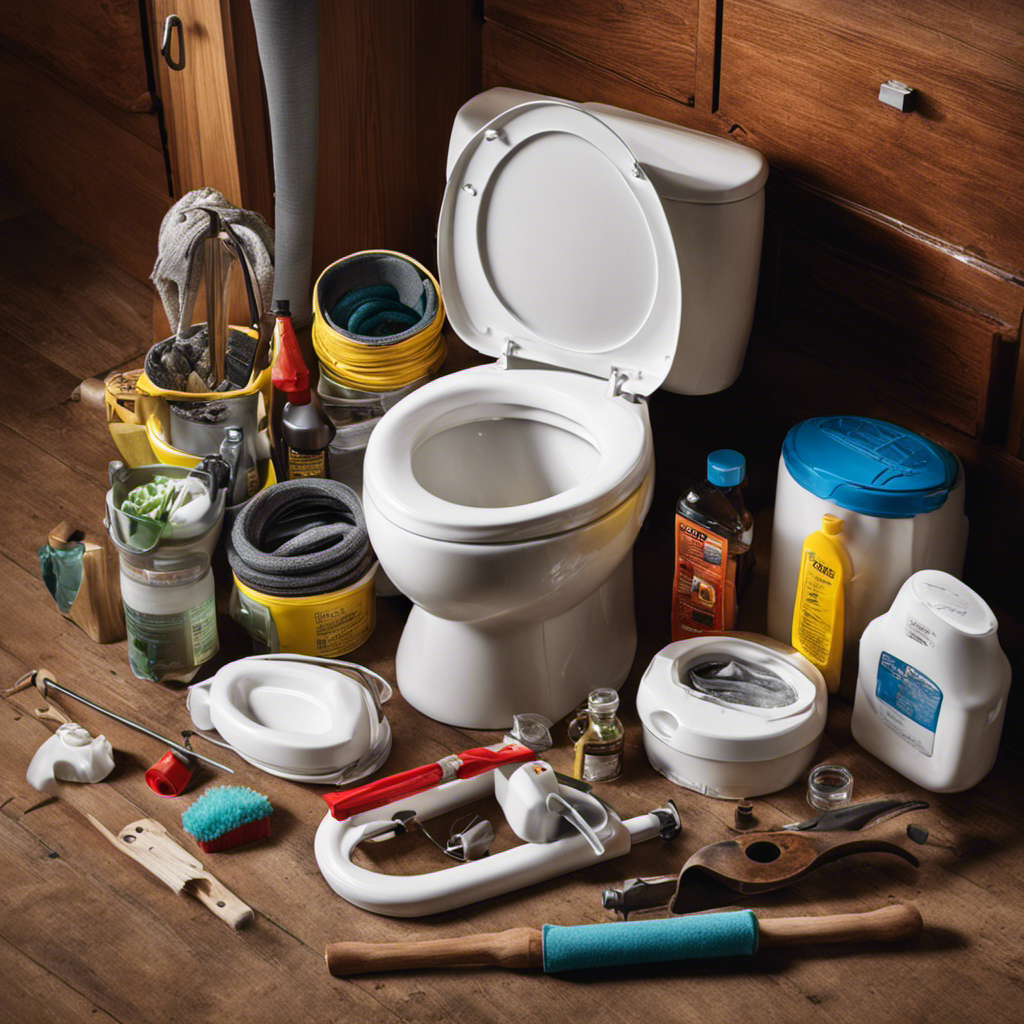Hey there!
Ever been in a sticky situation with a clogged toilet? Don’t worry, I’ve got you covered.
In this step-by-step guide, I’ll show you how to unclog a toilet like a pro. From assessing the severity of the clog to using a plunger or even a toilet auger, I’ll walk you through each method to ensure success.
Plus, I’ll share some maintenance tips to prevent future clogs.
So, let’s dive in and get your toilet back to its flushing glory!
Key Takeaways
- Determine the potential causes of the clog
- Obtain a good quality plunger with a rubber suction cup
- Avoid flushing non-flushable items like paper towels or sanitary products
- Regularly clean the toilet bowl and tank to remove buildup
Assess the Severity of the Clog
Before you start trying to unclog the toilet, you should first assess how severe the clog is. Determining the potential causes of the clog will help you understand the best approach to take.
Start by checking if there are any visible objects or debris blocking the toilet bowl. If you can see something, you can try using a plunger to dislodge it.
If the clog persists, it may be caused by a more serious issue, such as a blocked sewer line or a problem with the toilet’s internal mechanism. In such cases, it is important to assess the need for professional help.
If you are unsure or if your attempts to unclog the toilet have been unsuccessful, it is best to call a plumber who can diagnose and fix the problem safely and efficiently.
Gather Necessary Tools and Materials
You’ll need a plunger, rubber gloves, and a bucket to gather all the necessary tools and materials. Here’s a step-by-step guide on how to gather and prepare everything you’ll need to unclog a toilet.
-
Plunger: A must-have tool for unclogging toilets. Make sure you have a good quality plunger with a rubber suction cup that fits securely over the drain hole.
-
Rubber gloves: To protect your hands from any potential mess, it’s essential to wear rubber gloves while unclogging the toilet. This will prevent the spread of bacteria and provide a hygienic experience.
-
Bucket: Having a bucket nearby will come in handy to collect excess water or any debris that may come out during the unclogging process. It will help keep the area clean and make it easier to dispose of any waste.
Use a Plunger to Unclog the Toilet
To start, make sure the plunger has a secure seal over the drain hole. This is crucial for effective unclogging. Once the plunger is in place, push it down firmly, then pull up quickly. Repeat this motion several times to create suction and dislodge the blockage. It’s important to maintain a tight seal throughout the process.
One common mistake to avoid is plunging too forcefully, as this can splash dirty water all over the bathroom. Another mistake is using a plunger with a flat bottom, which won’t create enough suction.
If the plunger doesn’t work, try using a toilet auger. This tool is designed to reach deeper into the pipes and break up stubborn clogs.
Try Using a Toilet Auger if the Plunger Doesn’t Work
If the plunger doesn’t work, you can try using a toilet auger to break up stubborn clogs. A toilet auger, also known as a plumbing snake, is a tool specifically designed to unclog toilets. Here are three alternatives to a toilet auger for troubleshooting toilet clogs:
-
Chemical Drain Cleaners: These products contain chemicals that dissolve clogs, but they can be harmful to pipes and the environment. Use them sparingly and follow the instructions carefully.
-
Hot Water and Dish Soap: Pouring boiling water mixed with dish soap into the toilet bowl can help break up clogs. Let it sit for a few minutes before flushing.
-
DIY Drain Cleaners: Baking soda and vinegar can be combined to create a natural drain cleaner. Pour half a cup of baking soda followed by one cup of vinegar into the toilet bowl. Let it sit for 30 minutes before flushing.
Prevent Future Toilet Clogs With Maintenance Tips
By regularly maintaining your toilet, you can minimize the likelihood of future clogs. Preventive measures are essential to ensure the smooth functioning of your toilet. Here are some maintenance tips to follow:
-
Watch what you flush: Avoid flushing items like paper towels, sanitary products, or excessive toilet paper, as they can cause blockages.
-
Clean the bowl and tank: Regularly clean the toilet bowl and tank using a toilet cleaner and a brush to remove any buildup that could lead to clogs.
-
Check the water level: Ensure that the water level in the tank is at the correct level. If it’s too low, adjust the float valve accordingly.
-
Inspect the flapper valve: The flapper valve controls the water flow from the tank to the bowl. Make sure it is working properly and replace it if necessary.
Following these preventive measures will help you avoid common causes of toilet clogs and maintain a trouble-free toilet system.
| Preventive Measures | Common Causes of Toilet Clogs |
|---|---|
| Watch what you flush | Excessive toilet paper |
| Clean the bowl and tank | Flushing non-flushable items |
| Check the water level | Buildup in pipes or trap |
| Inspect the flapper valve | Low water pressure |
Conclusion
In conclusion, unclogging a toilet can be a messy and inconvenient task, but with the right tools and techniques, it can be easily resolved.
By carefully assessing the severity of the clog and gathering the necessary equipment, such as a plunger or toilet auger, you can tackle the problem head-on.
Remember to use steady, forceful plunging motions or gently navigate the auger through the pipes.
With regular maintenance and preventive measures, you can avoid future toilet clogs and keep your bathroom running smoothly.
Don’t let a clog flush your spirits down the drain!










